
Majestic Mount Kenya: A Natural Wonder
Explore the breathtaking landscapes of Mount Kenya, a UNESCO World Heritage site, known for its diverse ecosystems and rich cultural heritage.
Mount Kenya, a UNESCO World Heritage site, offers travelers an unforgettable experience surrounded by breathtaking landscapes, unique wildlife, and rich cultural heritage. This stunning mountain peak, with its three main summits—Batian, Nelion, and Lenana—beckons adventurers and nature enthusiasts alike, providing both challenging treks and serene vistas in its lush surroundings. As the second-highest mountain in Africa, it presents a remarkable opportunity to explore diverse ecosystems, from tropical forests to alpine meadows, making it a must-visit destination for any traveler seeking the beauty of nature.
A brief summary to Mount Kenya
Local tips
- Plan your visit between January and March or June to October for the best weather conditions.
- Consider hiring a local guide to enhance your trekking experience and ensure your safety.
- Pack layers of clothing, as temperatures can vary significantly from day to night.
- Stay hydrated and acclimatize properly to avoid altitude sickness.
Getting There
-
Car
From Maasai Mara, head towards Narok town on the A202 road. This journey takes approximately 1.5 to 2 hours. Once in Narok, continue on the A104 road towards Nairobi. After about 2 hours, you will reach the junction where the A104 meets the A2 road. Turn left onto the A2 road towards Nanyuki. This part of the journey takes around 3 hours. As you approach Nanyuki, follow the signs towards Mount Kenya National Park. The entrance is well-marked, and you'll have to pay an entrance fee (approximately $20 USD for non-residents). After entering the park, follow the road signs to the various visitor centers and hiking trails.
-
Public Transportation
Start your journey from Maasai Mara by taking a matatu (shared minibus) to Narok town. This ride takes about 1.5 to 2 hours and costs around 300 KES (approximately $2.50 USD). Once in Narok, you will need to board a long-distance bus traveling to Nanyuki. The bus fare is approximately 800 KES (around $7 USD) and the journey will take about 3 hours. Upon arriving in Nanyuki, you can take a taxi or local matatu to the entrance of Mount Kenya National Park. Expect to pay about 200 KES ($1.50 USD) for the taxi ride. Don't forget to bring cash for the park entrance fee, which is around $20 USD for non-residents.
Discover more about Mount Kenya
Iconic landmarks you can’t miss
Fairmont Mount Kenya Safari Club
23.7 km
Discover the ultimate luxury experience in the heart of Kenya at Fairmont Mount Kenya Safari Club, where nature meets elegance.

Serena Mountain Lodge
25.0 km
Discover tranquility and luxury at Serena Mountain Lodge, a perfect getaway in the heart of the breathtaking Mt. Kenya forest.

Equator Line Nanjuki
28.7 km
Stand on the Equator at Nanjuki, where science meets nature in a breathtaking landscape with cultural experiences.

Shepherds Huts
31.0 km
Discover tranquility at Shepherds Huts, a unique retreat on Nyeri-Nanyuki Road, blending rustic charm with modern comforts amid Kenya's stunning landscapes.

KINORO RUNDA
33.2 km
Discover the beauty of Kenya with Kinoro Runda, your trusted tour operator for unforgettable adventures and cultural experiences.

Sirai House
39.2 km
Discover the serene beauty and luxury of Sirai House, a premier lodge in Laikipia, Kenya, perfect for your unforgettable travel experience.

Sirikoi
42.2 km
Experience unparalleled luxury and wildlife adventures at Sirikoi Lodge, located in the breathtaking Lewa Wildlife Conservancy, Kenya.

Mau-Mau Cave
42.3 km
Discover the historical significance and natural beauty of Mau-Mau Cave, a captivating destination in Kenya that reveals stories of courage and adventure.

Borana Lodge
42.9 km
Discover unparalleled luxury and wildlife at Borana Lodge, an extraordinary retreat in the heart of Kenya's stunning Borana Wildlife Conservancy.

Meru Museum
44.1 km
Explore the Meru Museum: A gateway to the vibrant culture and history of the Meru people in Kenya.

Lewa Wildlife Conservancy
44.5 km
Discover the heart of Kenya's wildlife conservation at Lewa Wildlife Conservancy, where nature and adventure come together in stunning landscapes.

Arijiju Retreat
46.1 km
Experience luxury and tranquility at Arijiju Retreat, a serene escape in the heart of Kenya's stunning landscapes, perfect for relaxation and rejuvenation.

Lewa House
46.2 km
Experience the luxury of Lewa House in the heart of Kenya's wildlife conservation, where adventure meets tranquility amidst stunning landscapes.

Mt Kenya Peaks View
46.7 km
Explore the stunning beauty of Mt Kenya Peaks, a natural wonder offering breathtaking views, diverse wildlife, and rich cultural experiences in the heart of Kenya.

chogoria route
47.0 km
Explore the Chogoria Route, a scenic hiking trail that takes you through the stunning landscapes of Mount Kenya, rich in biodiversity and breathtaking vistas.

Unmissable attractions to see
Nelion
0.1 km
Explore the breathtaking views and thrilling adventures at Nelion, a must-visit mountain peak in Kenya for all nature lovers and adventure seekers.

Batian
0.6 km
Experience the breathtaking beauty and thrilling adventure at Batian, the highest peak of Mount Kenya, a UNESCO World Heritage Site.

Point Thompson
0.6 km
Explore the stunning landscapes and diverse wildlife at Point Thompson, a premier hiking destination in Kenya's natural beauty.

Mount Kenya National Park
0.9 km
Discover the breathtaking beauty and adventure of Mount Kenya National Park, a UNESCO World Heritage site rich in wildlife and stunning landscapes.

Point Lenana
1.0 km
Explore the breathtaking heights of Point Lenana in Mount Kenya National Park, a must-visit destination for nature lovers and adventure seekers.

John Deere
1.6 km
Explore the history and innovation of John Deere at this premier tourist attraction in Kenya, showcasing the evolution of agricultural machinery.

Shiptons campsite Mt kenya
1.6 km
Discover the serene beauty and adventure at Shipton's Campsite, your gateway to Mt. Kenya's breathtaking landscapes and wildlife.

Neema's Eye
6.2 km
Explore Neema's Eye, a spectacular hiking area in Kenya's National Park, where breathtaking landscapes and diverse wildlife await.

The Gates Fall (Nithi)
6.8 km
Experience the breathtaking beauty of The Gates Fall in Kenya, a must-visit natural wonder for every traveler seeking tranquility and adventure.

Chogoria Roadhead Campsite
10.6 km
Discover the beauty of Kenya at Chogoria Roadhead Campsite, where hiking adventures meet cozy indoor lodging in nature's embrace.

Lake Ellis
10.8 km
Experience the serene beauty of Lake Ellis in Kenya, a hidden gem perfect for nature lovers, fishing enthusiasts, and those seeking tranquility.

Nithi Falls
11.2 km
Experience the breathtaking beauty of Nithi Falls, a serene hiking paradise in Kenya surrounded by lush landscapes and vibrant wildlife.

KWS Chogoria Gate - Mt. Kenya National Park
15.3 km
Explore the stunning wildlife and breathtaking landscapes at KWS Chogoria Gate, the gateway to Mt. Kenya National Park.

Mount Kenya Forest
15.8 km
Explore the lush landscapes and diverse wildlife of Mount Kenya Forest, a nature lover's paradise steeped in ecological beauty.
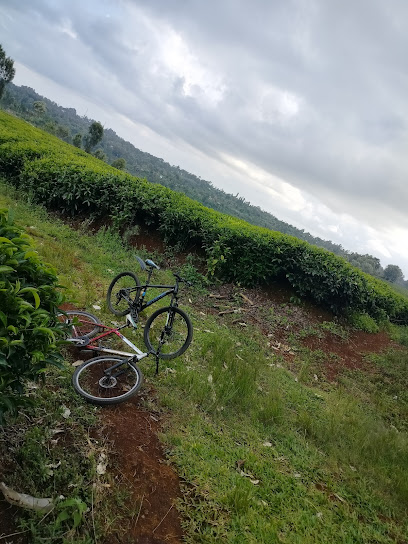
equator point timau
18.0 km
Discover the Equator Point Timau, where geography meets culture, offering breathtaking views and unique insights into the equatorial experience.

Essential places to dine
Mackinders Hut
2.4 km
Experience the warmth and adventure at Mackinders Hut, your essential stop on the way to conquering Mount Kenya's majestic peaks.
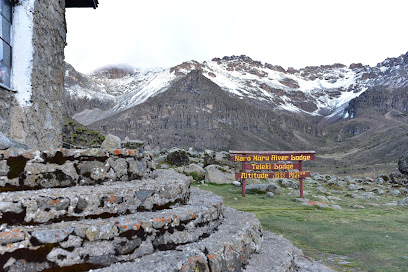
Colobus Restaurant by Fairmont
23.7 km
Experience exquisite dining at Colobus Restaurant by Fairmont in Nanyuki - where local flavors meet breathtaking views.

Angiri Camp,Nanyuki
27.3 km
Experience adventure and relaxation at Angiri Camp in Nanyuki - your perfect getaway amidst stunning natural beauty.
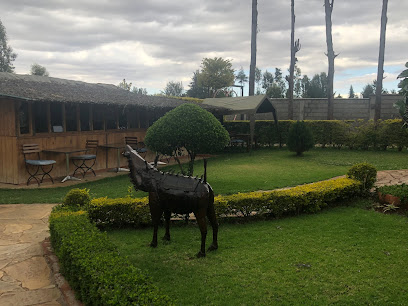
Jovian Guest House
27.7 km
Discover exquisite local flavors in a serene setting at Jovian Guest House in Timau.
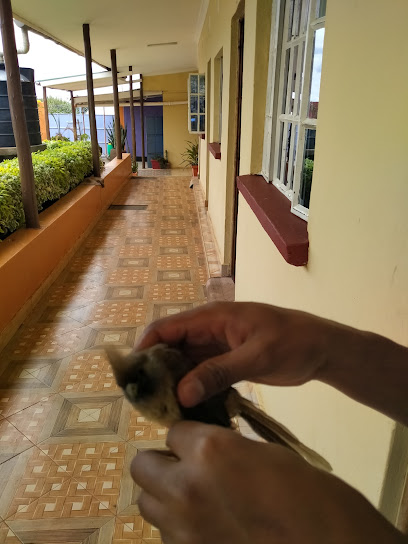
Pork Village
29.7 km
Experience authentic Kenyan flavors at Pork Village near Mt. Kenya National Park—where every meal tells a story.

Bantu Lodge
29.7 km
Experience authentic Kenyan cuisine amidst breathtaking landscapes at Bantu Lodge in Nyeri.

La Mensa Italiana
30.3 km
Experience authentic Italian flavors at La Mensa Italiana in Nanyuki – where every dish tells a story.
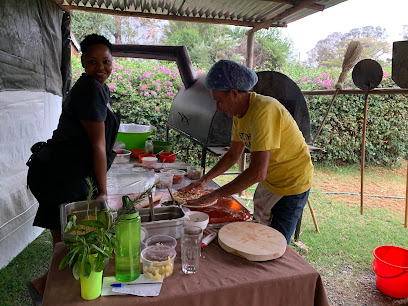
Le Rustique Restaurant
30.4 km
Discover exquisite Mediterranean cuisine at Le Rustique Restaurant in Nanyuki – where every meal is a delightful journey of flavors.

Blue Flame, Nanyuki
30.4 km
Experience Nanyuki's vibrant culinary scene at Blue Flame Restaurant – where local flavors meet international cuisine in an inviting atmosphere.

The Farmhouse Inn, Nanyuki
30.4 km
Experience serene luxury at The Farmhouse Inn in Nanyuki – your gateway to nature’s beauty and local culinary delights.

EUGENE KAIGA
30.4 km
Discover culinary excellence at Eugene Kaiga in Nanyuki - savor authentic Kenyan flavors in an inviting atmosphere.

The Croft
30.4 km
Discover Nanyuki's culinary gem at The Croft – where barbecue meets breathtaking views.
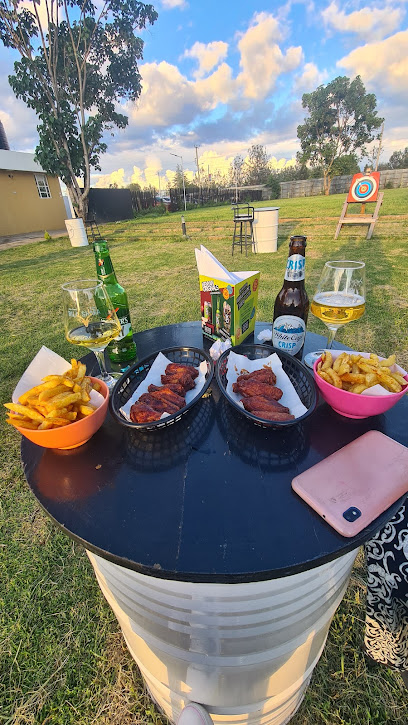
The Old House Nanyuki
30.5 km
Experience Kenyan hospitality at The Old House Nanyuki - where exquisite dining meets breathtaking landscapes.

Trout Tree Restaurant
30.8 km
Experience exquisite dining at Trout Tree Restaurant in Nanyuki, where fresh trout meets breathtaking views by the Burguret River.

Bara Burritos @ Mt Kenya Climbing gym
30.9 km
Experience delicious burritos in the heart of adventure at Bara Burritos, located in Mt Kenya Climbing Gym - perfect for climbers and explorers alike.

Markets, malls and hidden boutiques
Agri-Biotech Farm International
0.0 km
Explore sustainable agriculture at Agri-Biotech Farm International in Mt. Kenya, where innovation meets nature in a breathtaking setting.

KALALU SHOPPING CENTER
27.6 km
Explore the vibrant Kalalu Shopping Center in Mathagiro Town, a unique shopping destination blending local culture with diverse offerings.

Ngomongo Cottage
27.7 km
Experience the serene beauty of Mount Kenya at Ngomongo Cottage, a cozy retreat surrounded by nature's splendor.

Irigithathi Shopping Centre
28.3 km
Explore Irigithathi Shopping Centre for unique local finds and delicious Kenyan cuisine near Mt. Kenya National Park.

Kirimis shop
30.0 km
Discover Kirimis Shop in Mureru Farm: your destination for unique locally crafted home goods and authentic souvenirs.

Mountain View Curio Shop
30.1 km
Explore the rich cultural tapestry of Kenya at Mountain View Curio Shop, where unique handcrafted treasures await every traveler.

Mwireri Shopping Center Kagurumo
30.8 km
Experience the heart of Mathagiro Town at Mwireri Shopping Center Kagurumo, where shopping meets local culture in a vibrant atmosphere.

Kongoni Camp
30.9 km
Discover the serene beauty of Kongoni Camp in Nanyuki, your perfect base for exploring Mount Kenya and enjoying luxurious comfort.

Vitu Too Farm Shop
30.9 km
Experience local flavors and the warmth of rural Kenya at Vitu Too Farm Shop in Kisima, where fresh produce and artisanal goods await.

The Laikipian
31.0 km
Explore The Laikipian in Kenya, where conservation meets community engagement amidst stunning natural beauty.

Esiankiki Resort & Spa
31.1 km
Experience the beauty of Kenya at Esiankiki Resort & Spa, where luxury meets nature amidst stunning views of Mount Kenya.

Kirimara Springs Hotel
31.6 km
Discover the tranquil haven of Kirimara Springs Hotel in Mombasa, where comfort meets adventure amid stunning coastal beauty.

Nanyuki Mall
31.6 km
Explore Nanyuki Mall: Your one-stop destination for shopping, dining, and entertainment in the heart of Kenya's scenic landscapes.

Jose Safaris & Adventures
31.7 km
Discover the beauty of Kenya with Jose Safaris & Adventures, your gateway to unforgettable wildlife and cultural experiences in Nanyuki.
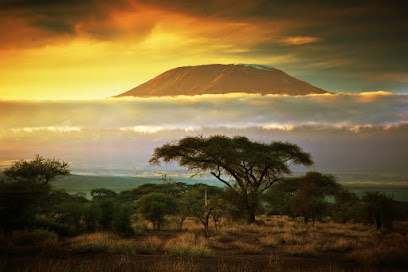
MsingiPACK Mt Kenya Region
31.7 km
Explore MsingiPACK: Your go-to educational supply store in the stunning Mt Kenya Region, blending learning with breathtaking scenery.
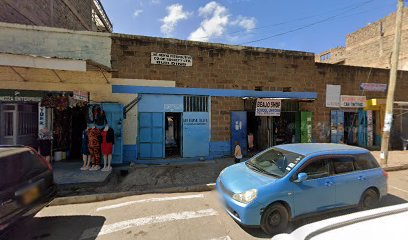
Essential bars & hidden hideouts
Club Buffalo
24.3 km
Experience the vibrant nightlife at Club Buffalo in Nyeri; a lively bar offering great drinks, music, and a welcoming atmosphere for all.

Lion pub
25.2 km
Experience the vibrant atmosphere of The Lion Pub in Kieni, where local culture meets refreshing drinks and friendly faces.

ZEBRA BAR AND RESTAURANT
25.6 km
Discover the flavorful delights of Zebra Bar and Restaurant, a top grill destination in Kwa Makara, perfect for food enthusiasts and social gatherings.

Luna Park Bar & Restaurant.
25.7 km
Experience the vibrant atmosphere of Luna Park Bar & Restaurant in Kenya, where delicious cuisine meets lively entertainment.

Mt Kenya View Point Bar Rest
26.6 km
Discover breathtaking views and local flavors at Mt Kenya View Point Bar Rest, the perfect retreat in the heart of Kenya's stunning landscape.

Kim's Pub
26.7 km
Experience the lively nightlife and local culture at Kim's Pub, a vibrant bar perfect for unwinding and making new friends.

Cheers Pub
26.9 km
Experience the vibrant nightlife at Cheers Pub, a local favorite in Timau, known for its welcoming atmosphere and diverse drink selection.

Magutu Bar
27.0 km
Experience the vibrant nightlife of Timau at Magutu Bar, where local culture meets refreshing drinks in an inviting atmosphere.

CLASSIC BAR
27.4 km
Discover the vibrant atmosphere of Classic Bar, your perfect stop before exploring the wonders of Mount Kenya National Park.

Makuti Bar
27.6 km
Discover the lively atmosphere of Makuti Bar in Timau, where local drinks and warm hospitality create unforgettable nights out.
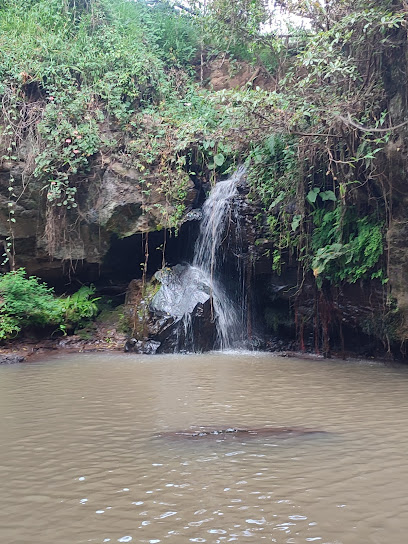
Klub sigature
30.0 km
Experience the best of Timau at Klub Signature, where flavorful grilled dishes and a relaxing atmosphere await food lovers.

Le Rustique Hotel
30.4 km
Discover the charm of Nanyuki at Le Rustique Hotel, offering exquisite comfort and stunning views of Mount Kenya for an unforgettable experience.

HIGHLANDS BAR & RESTRAUNT
30.6 km
Discover the vibrant Highlands Bar & Restaurant in Kangaita, a perfect blend of local culture, lively atmosphere, and delicious cuisine.

Hilokazi Bar
30.8 km
Discover the authentic culinary experience at Hilokazi Bar in Gitinga Village, where local flavors and warm hospitality come together.

Gawanaz Grill Nanyuki Town
31.6 km
Discover the essence of Kenyan grilling at Gawanaz Grill Nanyuki Town, where every bite is a celebration of local flavors and hospitality.




